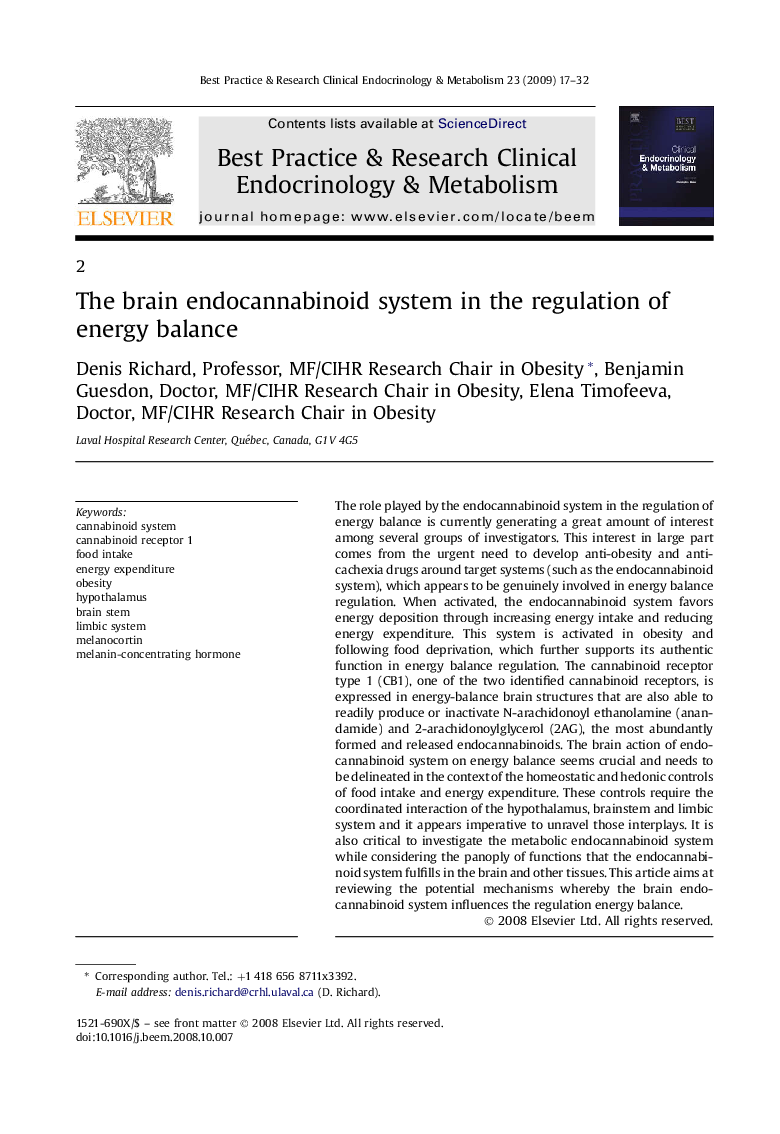| Article ID | Journal | Published Year | Pages | File Type |
|---|---|---|---|---|
| 2791821 | Best Practice & Research Clinical Endocrinology & Metabolism | 2009 | 16 Pages |
The role played by the endocannabinoid system in the regulation of energy balance is currently generating a great amount of interest among several groups of investigators. This interest in large part comes from the urgent need to develop anti-obesity and anti-cachexia drugs around target systems (such as the endocannabinoid system), which appears to be genuinely involved in energy balance regulation. When activated, the endocannabinoid system favors energy deposition through increasing energy intake and reducing energy expenditure. This system is activated in obesity and following food deprivation, which further supports its authentic function in energy balance regulation. The cannabinoid receptor type 1 (CB1), one of the two identified cannabinoid receptors, is expressed in energy-balance brain structures that are also able to readily produce or inactivate N-arachidonoyl ethanolamine (anandamide) and 2-arachidonoylglycerol (2AG), the most abundantly formed and released endocannabinoids. The brain action of endocannabinoid system on energy balance seems crucial and needs to be delineated in the context of the homeostatic and hedonic controls of food intake and energy expenditure. These controls require the coordinated interaction of the hypothalamus, brainstem and limbic system and it appears imperative to unravel those interplays. It is also critical to investigate the metabolic endocannabinoid system while considering the panoply of functions that the endocannabinoid system fulfills in the brain and other tissues. This article aims at reviewing the potential mechanisms whereby the brain endocannabinoid system influences the regulation energy balance.
